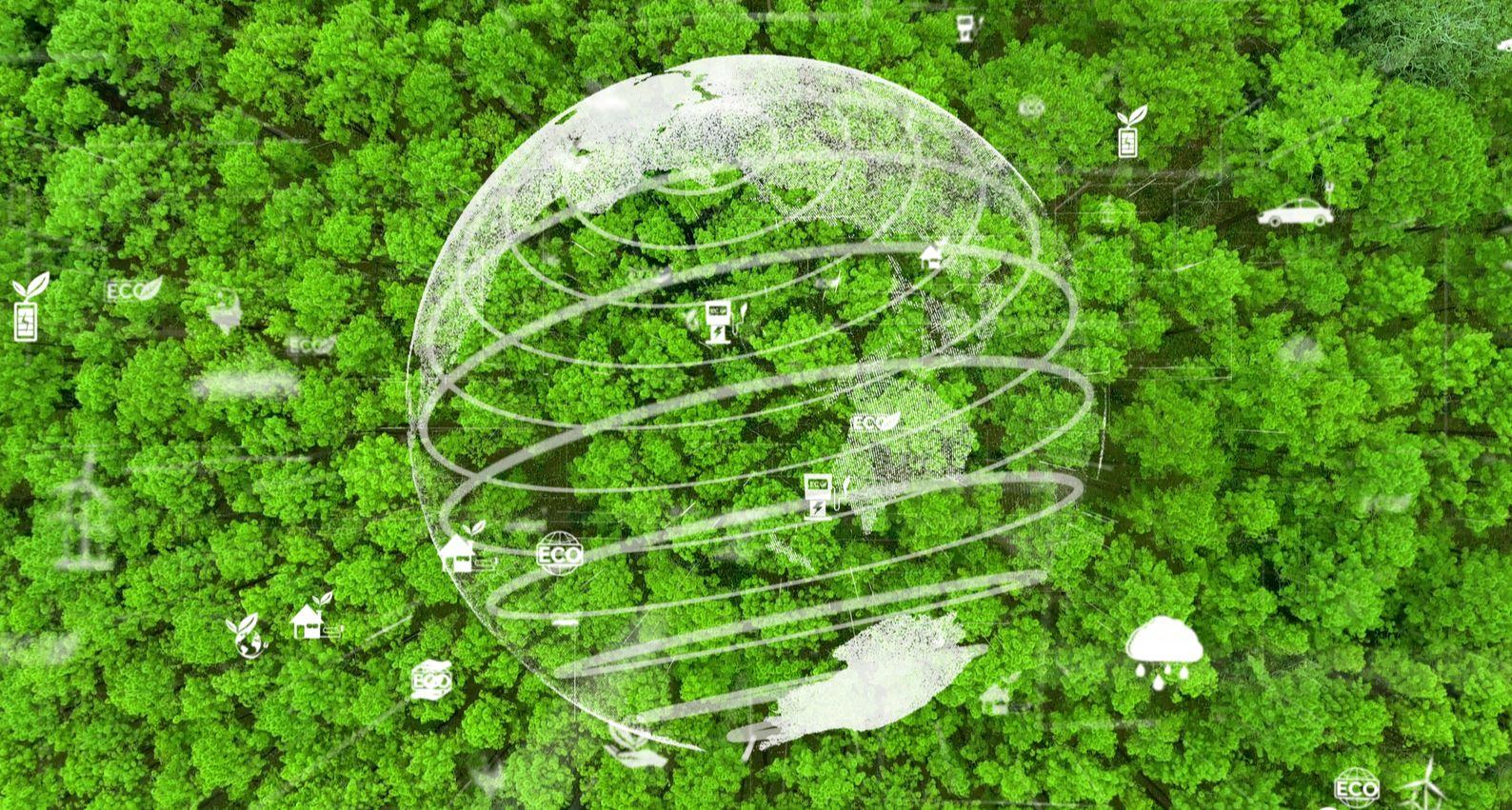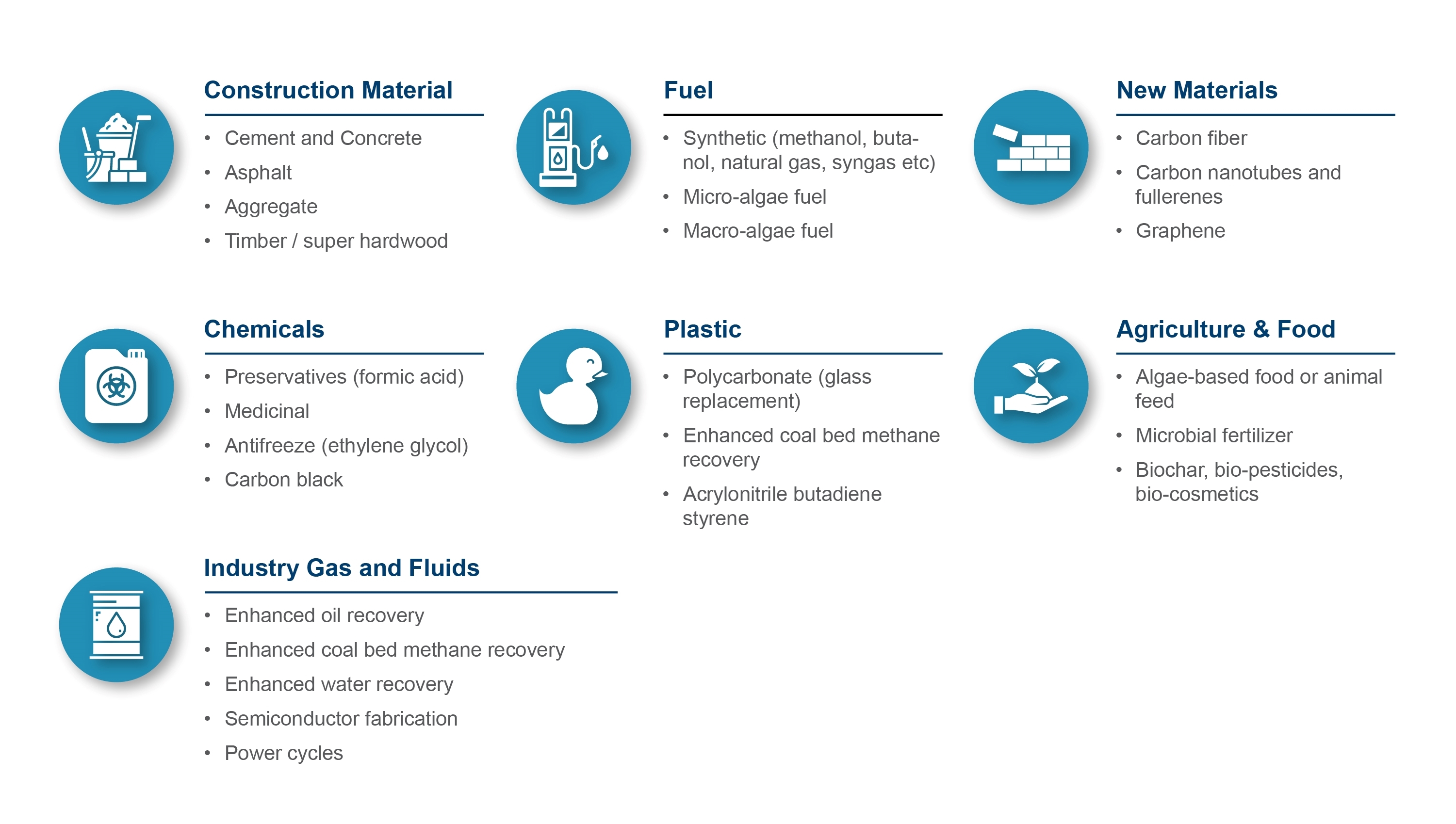Captured Carbon Dioxide – A Valuable Resource
Published on 25 Jan, 2022

With climate change threatening the entire planet, it is essential to take decisive steps to stop environmental degradation. Governments across the globe are committed to reducing their carbon emission and invest in green energy, carbon capture (CC), and carbon capture and utilization (CCU). These technologies help modify captured carbon and reuse it, thereby reducing pollution and contributing to achieving net zero emission.
Climate change has created an existential crisis for the planet. With the global temperature rising, governments and corporations across the world are working toward decreasing their carbon footprint. The Paris Agreement led to many nations committing to reach net zero emission in the next few decades. Hence, research for new technologies and implementation of existing ones for carbon capture and utilization (CCU) processes have increased.
Carbon utilization can be defined as the different ways in which captured carbon oxides (CO2 and CO) can be recycled and reused to make other products or services. The new technologies are designed based on the uptake, conversion, and mineralization of CO2.
The following processes are used to undertake carbon utilization:
Carbon Uptake – The various processes under this approach are based on the utilization of carbon to create algae that can then be reused to make other products. In this process, flue gas containing varying amounts of CO2 and other gases such as nitrogen oxide and sulfur oxide are fed directly to the algae, thus reducing or eliminating the need for CO2 capture systems.
Algae are efficient photosynthetic organisms. The algal systems produce biomass, which can be converted into products such as fuels, food for animals and humans, chemicals, and soil supplements.
Conversion Into Value-Added Products – This pathway focuses on the development of reactor designs and new catalyst materials that can aid in economic conversion of CO2 into useful chemicals. As CO2 is a low-energy molecule, its conversion requires huge energy inputs to activate it. It is also essential to have powerful catalysts to speed chemical reactions and create desired products.
The different conversion pathways include electrochemical, thermochemical, photochemical, and microbially-mediated methods. Through this process, carbon can be transformed into chemicals, synthetic fuel, plastic, and solid carbon products such as carbon fiber.
Mineralization – This process is used to convert carbon to generate inorganic material. As CO2 and carbonates are low energy, thermal, chemical, or electrical energy has to be added for the process to be successful. The alkaline reactants mineralize CO2 to produce inorganic material such as aggregates, cement, bicarbonates, and chemicals. Carbonate materials are an effective long-term storage option for CO2 and represent a huge potential market.

Source - Carbon Utilization - A Vital and Effective Pathway for Decarbonization (Centre for Climate and Energy Solutions)
Startups in this industry
- See O2 Energy – Based in Canada, this start-up has the technology to effectively obtain CO2 and convert it into a value-added product. It uses reversible fuel cell technology to develop reversible solid oxide fuel cells. Through this technology, water is converted into hydrogen and carbon dioxide into carbon monoxide. The resultant product known as syngas is a mixture of hydrogen and carbon monoxide. This solution enables effective capture and reuse of CO2 into fuel, power, heat, and oxygen.
- Deep Branch Biotech – British startup Deep Branch Biotechnology creates carbon recycling technology that generates clean and sustainable single-cell protein directly from CO2 in industrial waste gas. This can be used by the feed industry as an alternative for soy of fishmeal. This technology is cost-effective as it requires minimal labor and land, uses microbes, and needs no sunlight.
- MIRRECO – Startup MIRRECO is based out of Australia and developed a technology that combines non-synthetic advanced polymers and hemp to create hemp carbon asset storage technology, products that is copyrighted as CAST by them. This technology is used to produce high-performance construction products. MIRRECO also identified environmentally sustainable and biodegradable hemp plastic, another product of CAST.
- Carbon-free Chemicals - US-based startup Carbonfree Chemicals has a proprietary technology that reduce carbon emission while producing hydrochloric acid, sodium bicarbonate, bleach, and caustic soda. These by-products are further used in the manufacture of PVC pipes and glass and cattle feed and in the oil and gas industry.
- Blue Planet – US-based Blue Planet patented its mineralization technology that allows capturing and permanent sequestering of billions of tons of CO2. The process can use diluted CO2 from any source at any concentration and turn it into valuable building materials to enable carbon capture at a profit.
These are just a few names in the industry that register rapid growth and make major investments. However, creating carbon-free atmosphere will require innovation, leadership, and collaboration.
Global deployment of CCU technologies is the need of the hour, but the initial cost of retrofitting plants can be a deterrent in achieving this objective. Furthermore, the skillset needed to manage these technologies is missing in the current workforce, and training is essential to develop these capabilities.
CCU technologies can have a massive positive impact on global temperatures and help attain ecological balance to a certain level.

